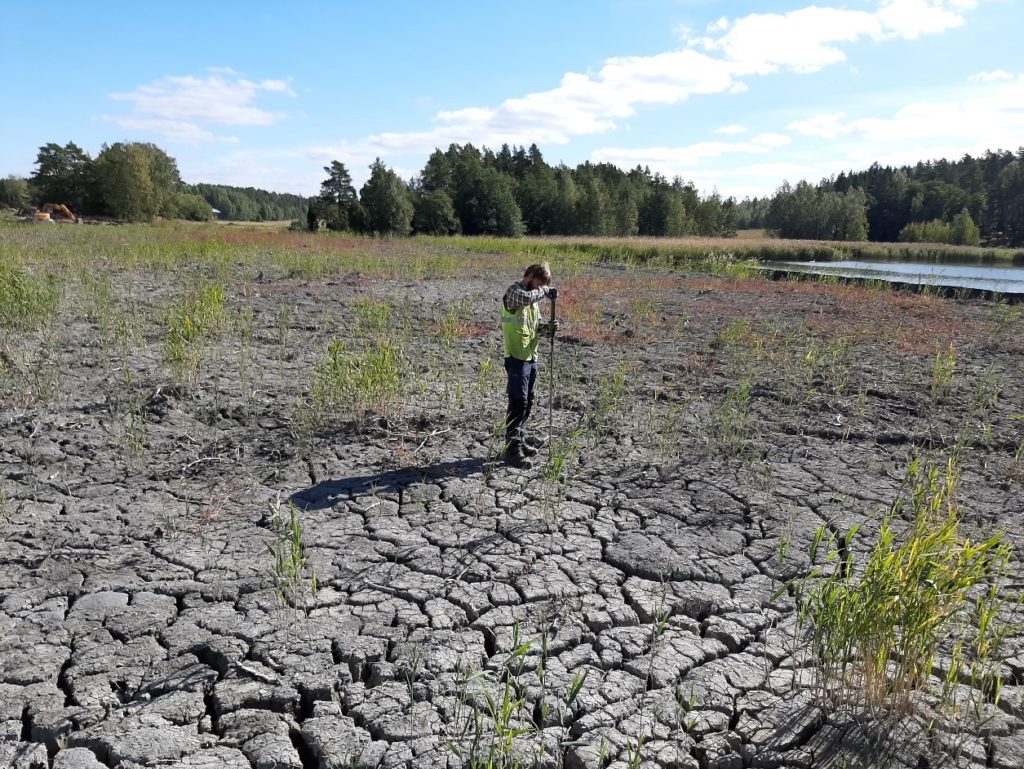New Methods to Promote Circular Economy in Earthworks
The carbon footprint of the built environment makes up about a third of Finnish greenhouse gas emissions¹. The Geological Survey of Finland took part in the review on how circular economy could be promoted in earthworks and how virgin aggregates could be replaced by utilising industrial by-products.

The objective of the CircVol project, which ended in December 2020, was to review the utilisation of large volumes of industrial by-products and excavated soil in infrastructure and earth construction. The target group of the CircVol project were companies and the Six City Strategy (‘6Aika’) cities of smart and sustainable urban development (Helsinki, Espoo, Vantaa, Turku, Tampere and Oulu). The project supported companies with developing new products and services that follow the principles of circular economy, and also designed operational models for cities to promote circular economy.
Approximately 200 million tonnes of aggregate are excavated in Finland annually, of which 70 million tonnes are virgin aggregate material. Most of this material is used for earth construction². On the other hand, urban and infrastructure construction generates soil mass, and recycling it for new purposes could be made more efficient instead of landfilling. Industrial operations also generate by-products that could partly replace the use of non-renewable aggregate in infrastructure construction sites. Many of the key building materials of infrastructure construction are emission intensive due to their manufacturing process, large transport volume or long distances.
Case-specific characterising of the excavated soil matter and other mineral-based materials that are generated during construction using optimised methods is an essential part of the safe and efficient utilisation and productisation of these materials.
Clean and Safe Material Circulation
To safely utilise excavated soil mass, attention must be paid to its concentrations of harmful substances and other impurities. The presence of acid sulphate soils must be considered especially in coastal areas. Sulphur-rich sediments will become dry and oxidised during earthworks and excavations, forming sulphuric acid in the soil. This increases the acidity of runoff water, which, in turn, dissolves toxic metals from the soil, spreading them to the environment. The acidity also causes structural corrosion.
Sediment dredged up from seabed may contain sulphides, which causes acidification upon oxidation. In port areas, for example, sediments often accumulate various harmful substances, and this affects how they can be managed and utilised. Dredged material and loose clay usually have to be stabilised before they can be used for earth construction.
Utilising Dredged Masses in Earthworks
The field experiment at Matalahti in Naantali, implemented as part of the CircVol project, tested the stabilising of dredged material on a small scale. By-products or waste-based recycled materials, such as ash and slag, supplied by companies within reasonable distance of the recovery site were used for the stabilisation process. The materials tested in the field experiment were found to be functional and environmentally safe in preliminary studies performed in the laboratory.
In total, nine different recipes for stabilising dredged material containing sulphides were studied in this field experiment. In the test, various binding agents to stabilise the material were mixed with the dredged material deposited on the ground, according to the recipes to be tested. All the recipes selected for the field test resulted in improved load bearing capacity with good geotechnical properties within six months of starting the field test. Stabilisation carried out with different binding agents also effectively neutralised the acid producing dredged material. The solubility of contaminants contained in the binding agents and the dredged material from the stabilised mass was very low.
Results from the CircVol Project
- Southwest Finland aggregate review: an assessment of the suitability of aggregate in the studied areas for various applications. The review helps ensure the availability of aggregate for various applications for years to come as well as decrease transport costs and the emissions generated.
- Reuse of soil mass: Acid sulphate soils in circular economy projects (e.g. Matalahti), research methods of excavated soils (Lead concentration of man-made soil in Turku), promotion of the utilisation of excavated soil (Heikkilä and Lauttaranta case studies in Turku).
- Determining the contaminant concentrations of excess soils: Measuring instruments based on spectroscopy
- CircVol 2 follow-up project: started in June 2021. The project studies in more detail the carbon footprint of recycled materials used for earthworks as well as the environmental impacts of dredged material deposited on land and their management.
CircVol Project Partners
Turku Science Park Oy (project coordinator), Regional Council of Southwest Finland, Åbo Akademi, Turku University of Applied Sciences, City of Helsinki, Forum Virium Helsinki Oy, City of Oulu, Oulu University of Applied Sciences, Tampere University, Finnish Environment Institute and Geological Survey of Finland.
Additional Information
Jaana Jarva, Chief Scientist, Geological Survey of Finland, jaana.jarva@gtk.fi
Jaakko Auri, Geologist, Geological Survey of Finland, jaakko.auri@gtk.fi
Sources
¹Confederation of Finnish Construction Industries RT: Rakennetun ympäristön hiilijalanjälkeä voidaan huomattavasti kutistaa nopeilla toimilla
²Institutional Repository for the Government: Ympäristöministeriön raportteja (13/2018), Kiviaineshuollon kehittäminen


